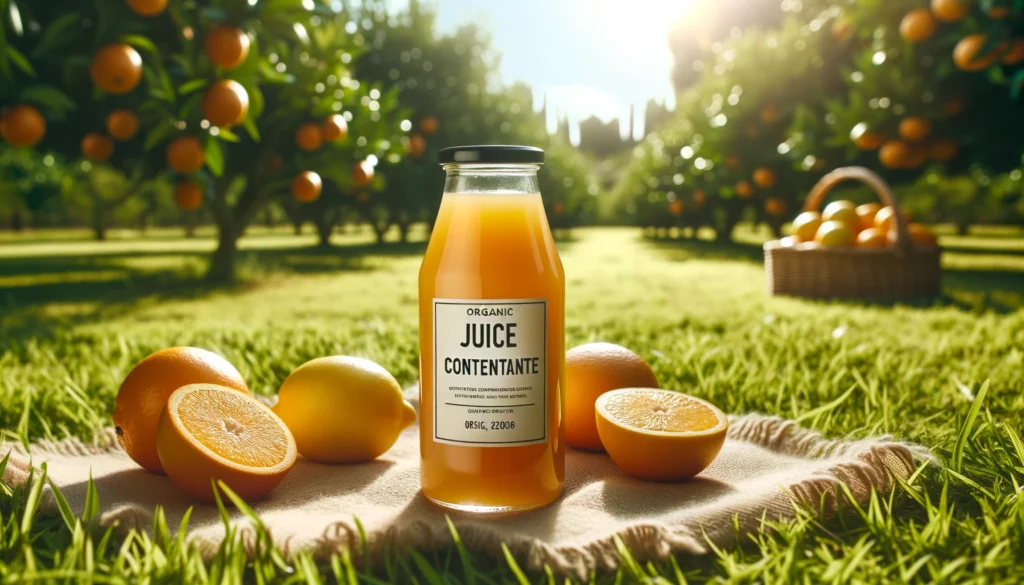Juice concentrate is a popular ingredient in many beverages and products, but what exactly is it? In simple terms, juice concentrate is any fruit or vegetable juice that has had most of its water content removed. This process results in a viscous syrup that is more concentrated in flavor and nutrients. By eliminating the water content, the juice becomes inhospitable to bacteria, therefore extending its shelf life and making it a convenient option for manufacturers and consumers alike source.
While juice concentrate is made from real fruit and vegetables, there are notable differences in processing methods compared to not-from-concentrate juices. In the case of not-from-concentrate juices, they are derived directly from fresh fruits without any additional processing. However, juice concentrates undergo a process where most of their water content is removed, and they may also have additives like preservatives, sweeteners, and sodium source.
It is important to note that juice concentrates can have varying health benefits and drawbacks, depending on the type and quality of the concentrate. Some juice concentrates may offer essential nutrients, such as vitamins and minerals, but they may also contain added sugars and preservatives source.
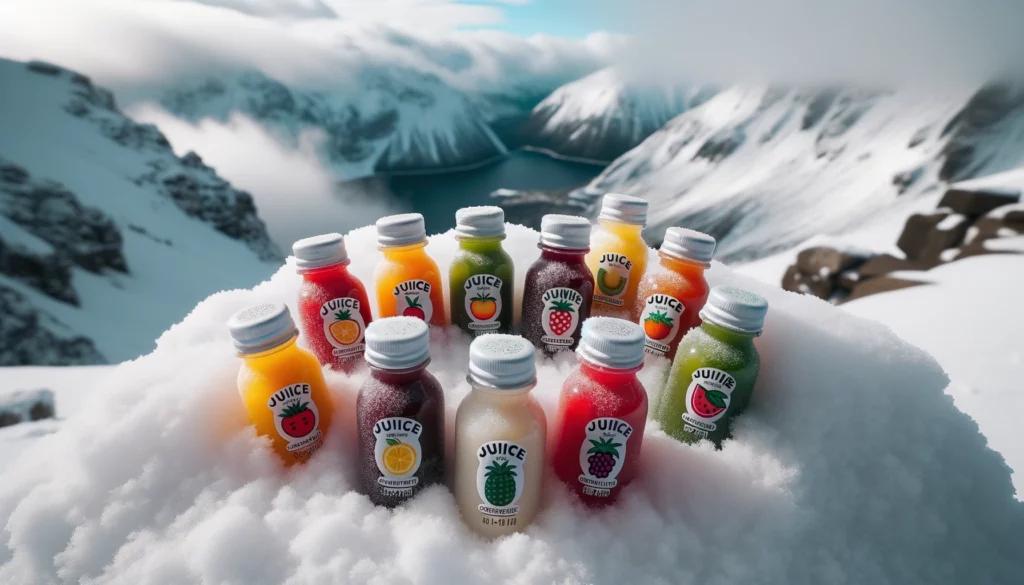
Understanding Juice Concentrate
Juice concentrate is a form of fruit or vegetable juice that has had most of its water content removed, resulting in a more concentrated, syrupy product. This is typically achieved through three main methods: vacuum concentration, freeze concentration, and membrane concentration. The main purpose of creating juice concentrate is to save on transportation and storage costs, as well as to extend the shelf life of the product.
In the vacuum concentration method, the juice is steam-heated to its boiling point, which causes the water to evaporate and the juice to become more concentrated. This is the most straightforward process of the three methods. On the other hand, freeze concentration involves freezing the juice and then slowly thawing it, which separates the water from the concentrated juice. Lastly, membrane concentration uses a filtration system to remove water content from the juice.
Fruit juice concentrate is different from 100% fruit juice in that it may contain added sugars and preservatives to improve the taste and shelf life of the product. Some fruit concentrates may be healthier than others, with 100% fruit concentrate being the best choice. However, it is essential to read the labels and ingredient lists on juice concentrate products to understand the nutritional value and contents accurately.
It’s important to consider the nutritional value of concentrated juice, as the processing methods can impact its overall health benefits. While some nutrients, such as vitamins and minerals, may remain in the concentrated juice, the processing can cause a loss of fiber and other beneficial compounds found in whole fruits and vegetables. Additionally, the added sugars in some juice concentrates can contribute to increased calorie intake and potential health risks if consumed in large quantities.
In summary, juice concentrate is a processed form of fruit or vegetable juice with the water content significantly reduced. It is mainly used for transportation and storage convenience and may have added sugars, preservatives, or other additives depending on the product. To get the most nutritional value from juice products, opt for 100% fruit concentrate or fresh juice and be mindful of the components listed on the packaging.
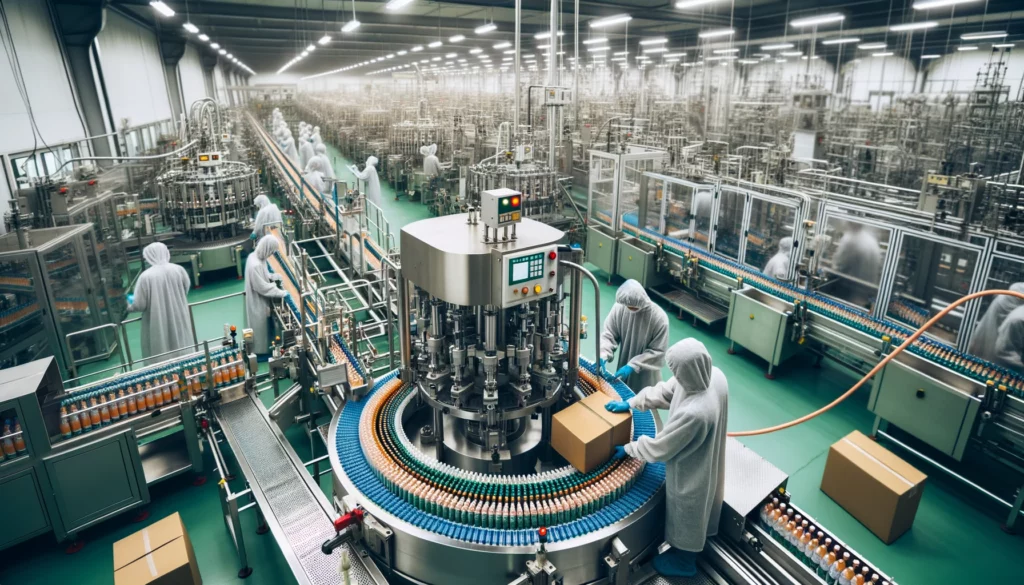
Production Process of Juice Concentrate
Juice concentrate is a form of fruit juice where most of the water content has been removed, leaving behind a concentrated product. This is done to extend the shelf life of the juice and reduce transportation costs. There are different methods to produce juice concentrate, and the resulting product can be used in various applications such as beverages, baked goods, and sauces.
One common method for producing juice concentrate is the vacuum concentration process. Fruit juice is heated using steam, causing it to boil and evaporate. The evaporated water is then removed under vacuum, resulting in a concentrated juice. This method is straightforward and widely used in the juice industry.
Another technique for making juice concentrate is freeze concentration, whereby the juice is cooled to form ice crystals. The ice crystals are then separated from the liquid, leaving behind a concentrated juice. This method is favored for its ability to preserve the natural flavor and nutrients of the juice.
Membrane concentration is a third method, utilizing reverse osmosis or ultrafiltration technology. In this process, juice is forced through a membrane that separates water from the other components, resulting in a concentrated product.
The juice, whether from concentrate or not from concentrate, goes through a pasteurization process to kill any harmful microorganisms and extend shelf life. This typically involves heating the juice for a short time, followed by quick cooling.
To further improve the quality of the juice concentrate, it is often filtered to remove any remaining solids or impurities. Some processes include aroma recovery, which ensures that the juice concentrate retains its natural flavor and aroma after the concentration process.
Juice concentrate maintains much of the nutritional content found in the original fruit juice and can be reconstituted with water to create a juice similar to its original state. The production process facilitates storage, transportation, and versatility in various applications while retaining key nutrients and flavor profiles of the original fruit.
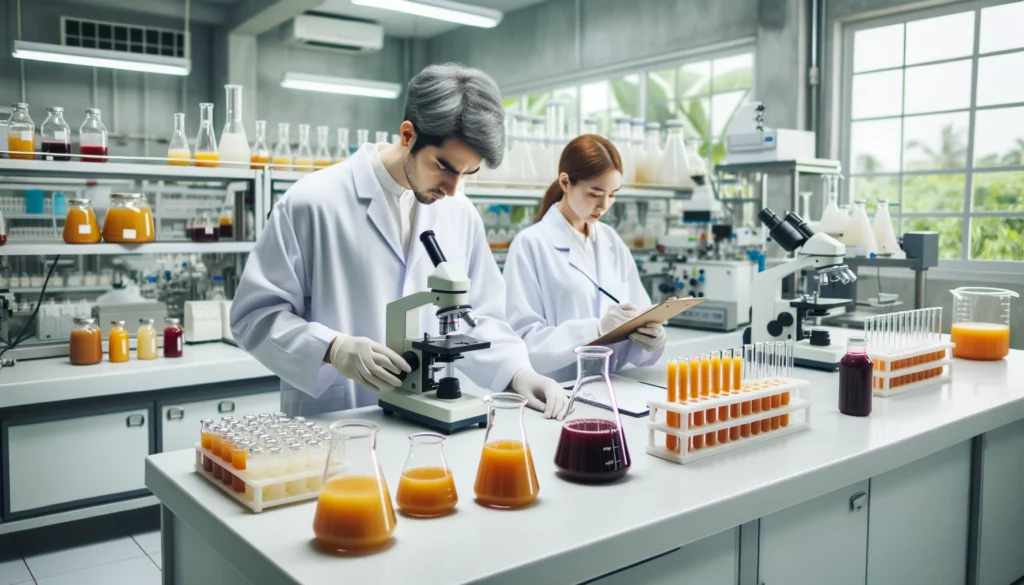
Health Implications of Juice Concentrate
Juice concentrate is made by removing most of the water from regular fruit juice through a filtration process. This results in a thicker, more concentrated form of juice that has a longer shelf life and can be more convenient to store. However, it is essential to consider the health implications associated with consuming juice concentrate.
One significant concern with juice concentrate is the potential loss of nutrients. When fruits are juiced, many of the essential vitamins, minerals, and phytonutrients can be lost, especially during the concentration process. For instance, vitamin C, vitamin A, and carotenoids – powerful antioxidants that help protect the body against cellular damage – can be diminished in the process1.
Furthermore, the concentration process may lead to lower fiber content in the juice. This can impact blood sugar levels, as fiber helps slow down the absorption of sugars in the bloodstream. Consequently, juice concentrate may cause a more significant spike in blood sugar levels compared to whole fruits or even regular juices^[2^]. This may pose potential risks, especially for individuals with diabetes or those managing their blood sugar levels.
Another worrisome aspect of juice concentrate is the possibility of added sugars. Some concentrated juice products may contain additional sugars, which can increase the calorie count per serving and contribute to weight gain, heart health issues, and other health complications^[3^]. It is crucial to check the labels when buying juice concentrate and opt for those that do not contain added sugars.
On the positive side, juice concentrate can still provide some health benefits. Concentrated juice may retain some essential vitamins and minerals, as well as certain antioxidants and phytonutrients. When consumed in moderation, juice concentrate can contribute to a balanced diet and provide some health benefits similar to those of whole fruits or fresh juices^[4^].
In summary, when considering the health implications of juice concentrate, it is essential to pay attention to the potential loss of nutrients, lower fiber content, and the presence of added sugars. While juice concentrate can still offer some health benefits, it is essential not to rely solely on concentrated juice for one’s nutrient intake and instead prioritize consuming whole fruits and a diverse range of fresh, nutrient-dense foods.
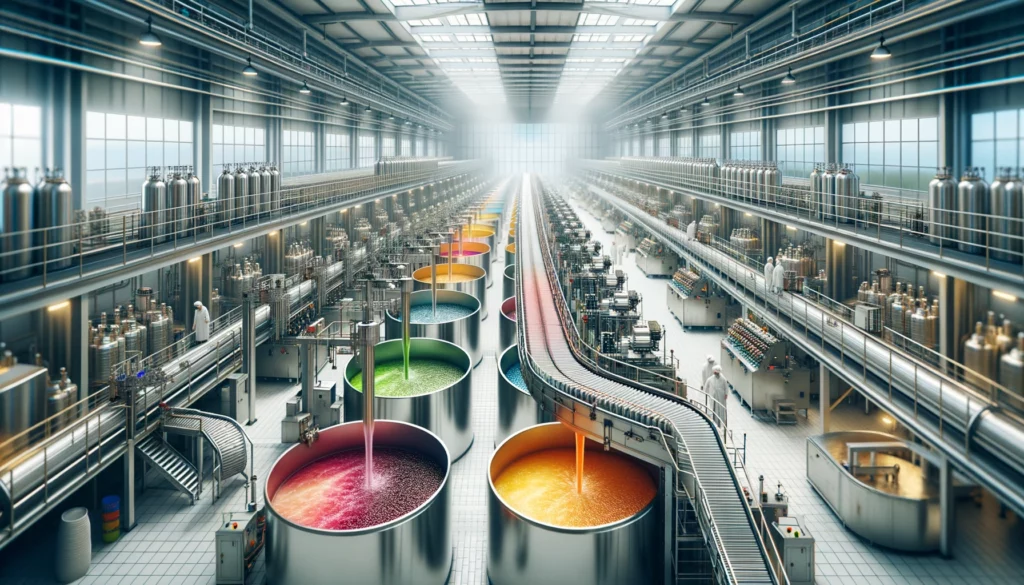
Artificial Additions in Juice Concentrate
Juice concentrate is created by removing most of the water content from fruit or vegetable juice. During this process, various artificial additions may be incorporated to enhance the taste, appearance, and shelf life of the final product. Some of these additives include preservatives, high-fructose corn syrup (HFCS), sodium, artificial flavors, and colors.
Preservatives are commonly added to juice concentrate to prolong its shelf life. These substances help prevent spoilage and maintain freshness by inhibiting the growth of bacteria and fungi. However, some preservatives may trigger sensitivity or allergies in certain individuals.
High-fructose corn syrup is a widely used sweetener in juice concentrates. It is made from corn starch and is sweeter than regular sugar. Despite its widespread use, HFCS has been linked to various health concerns such as obesity and diabetes. Many health-conscious consumers prefer to avoid products containing HFCS and opt for more natural sweeteners.
Sodium is another additive sometimes found in vegetable juice concentrates. It helps improve the taste and stability of the product, but excessive consumption of sodium can lead to high blood pressure and other health issues.
Artificial flavors and colors are often added to juice concentrates to make them more appealing and palatable. These additives can make the juice concentrate look and taste as close to fresh juice as possible. However, some artificial colors have been associated with health risks and are therefore avoided by some consumers who prefer juices made from natural ingredients.
In some cases, juice concentrate may also contain flavor packs which are made from fruit byproducts, such as peel and pulp oil, to enhance the taste and aroma of the final juice product. While these are technically derived from fruit, they are still considered artificial additions because they are not present in the original, fresh juice.
In summary, juice concentrates may contain various artificial additions, including preservatives, high-fructose corn syrup, sodium, artificial flavors, and colors. While these additives serve specific purposes in enhancing the final product, they may also pose potential health risks for some individuals. It’s essential for consumers to be aware of these additions and make informed choices when purchasing juice concentrates.
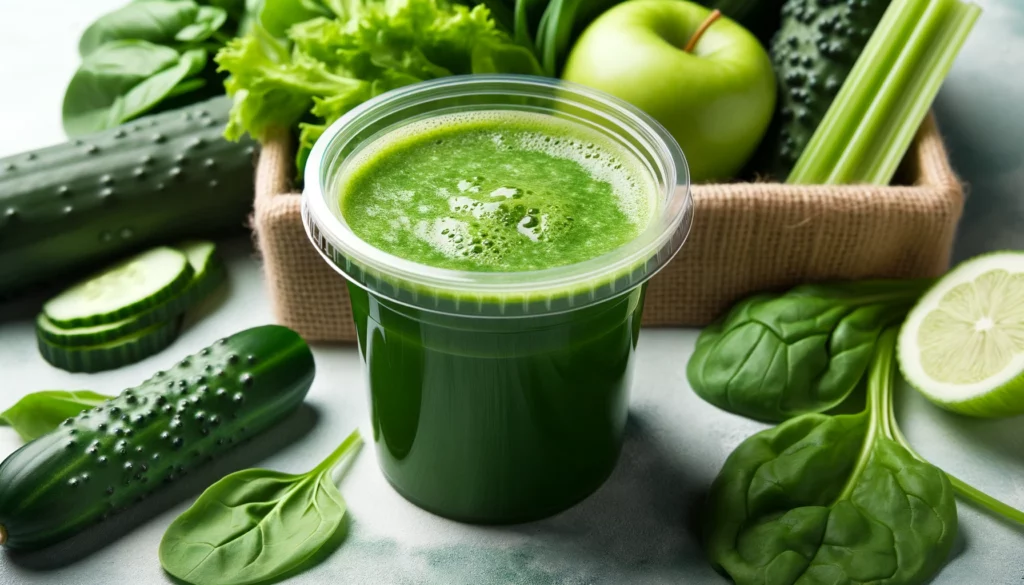
Types of Juice Concentrate
There are a variety of juice concentrates available in the market, with each one offering a distinct taste and nutritional value. Some of the most common types of juice concentrate include fruit juice, vegetable juice, orange juice concentrate, fruit juice from concentrate, and powdered juice concentrates.
Fruit Juice Concentrate: These are made primarily from fruit and can be derived from a single fruit or a blend of different fruits. Some popular fruit juice concentrates include those made from apples, grapes, berries, and pineapples. They can be used in products like soft drinks and fruit cocktails, or they can be diluted with water to make fruit juice.
Vegetable Juice Concentrate: Similar to fruit juice concentrate, vegetable juice concentrate is made by reducing the water content of vegetables. Commonly used vegetables for juice concentrates include tomatoes, carrots, and leafy greens. Beverage manufacturers often utilize vegetable juice concentrates to create healthy and refreshing vegetable juices.
Orange Juice Concentrate: Orange juice concentrate is a popular type of juice concentrate made from oranges, and it is widely consumed as a breakfast beverage. The concentrate can be frozen or refrigerated and then reconstituted with water before consumption, offering consumers a more convenient option compared to freshly squeezed orange juice.
Fruit Juice from Concentrate: Fruit juice from concentrate is a mixture of 100% fruit juice concentrate with water. This type of juice offers the convenience of a ready-to-drink beverage while retaining much of the flavor and nutritional benefits of the original fruit. It is commonly found in fruit punches and cocktails, offering a diverse range of flavors.
Powdered Juice Concentrates: As the name suggests, powdered juice concentrates are dehydrated forms of juice concentrate that can be easily mixed with water to create a juice beverage. These concentrates can be made from various fruits and vegetables and are often used in the production of soft drinks and commercial fruit juices.
In conclusion, juice concentrates come in various types, each catering to different tastes and health preferences. The choice of concentrate depends on factors such as nutritional value, convenience, and flavor preferences. Overall, juice concentrates offer a versatile option for incorporating fruits and vegetables into one’s diet.
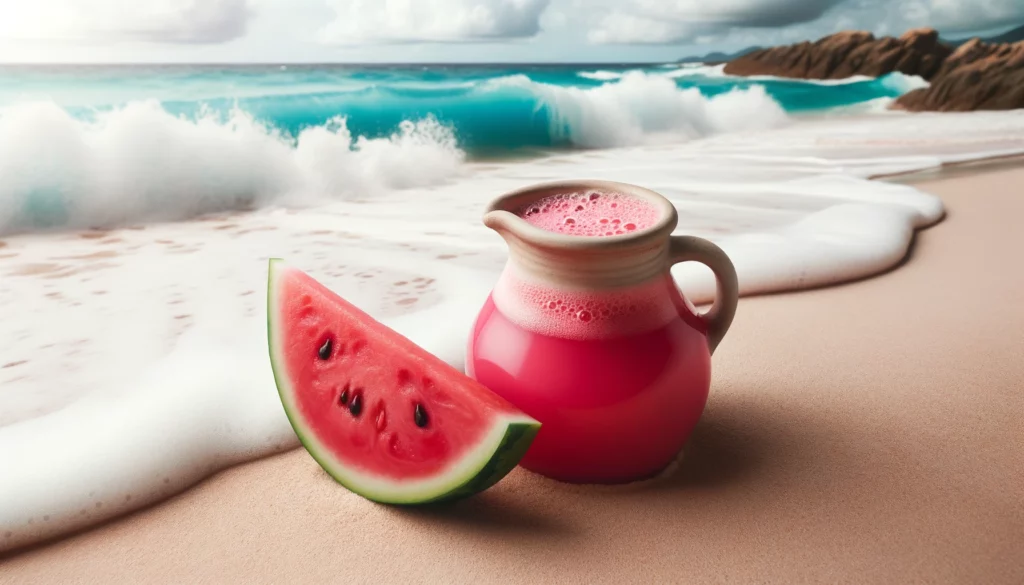
Comparing Juice Concentrate and Whole Fruit
Juice concentrate is created by removing most of the water content from fruit or vegetable juice, resulting in a syrup-like substance. This process extends the shelf life and makes it more practical for transportation and storage. On the other hand, whole fruit is in its natural form, consisting of pulp, skin, and juice.
Consuming whole fruits provides several health advantages over juice concentrates. Eating whole fruits retains the natural fiber content, which may promote better digestion and contribute to skin health. Fiber-rich fruits can also help keep the feeling of fullness for longer, potentially aiding in weight management.
Another advantage of whole fruits is the presence of various antioxidants, vitamins, and minerals that might be lost or reduced during the juice concentration process. These nutrients are vital for overall health and may protect against several diseases.
Juice concentrates, especially those made from fruits with high water content, tend to contain additives to preserve the taste and prevent spoilage. Some of these additives may not be ideal for those who are looking for a more natural and unprocessed option.
In contrast, freshly squeezed or raw fruit juice, which has not been through the concentration process, offers a closer alternative to whole fruit consumption. Raw juice retains most of the nutrients and fiber found in whole fruits, providing similar health benefits. However, it’s essential to keep in mind that even raw fruit juice can contain high amounts of natural sugar, making moderation key.
In summary, while juice concentrates can offer some nutritional value, they are less beneficial compared to consuming whole fruits or freshly squeezed fruit juices. The retention of fiber, nutrients, and the absence of additives make whole fruits and raw juices more suitable choices for those seeking optimal health benefits.

Market Aspects of Juice Concentrates
Juice concentrates play a significant role in the beverage industry as they provide an affordable and convenient alternative to fresh juices. The juice concentrate market is experiencing considerable growth, with market size projected to be valued at US$ 57,618.0 million in 2023 and expected to rise to US$ 94,645.1 million by 2033, expanding at a CAGR of 5.0% during the forecast period1.
One of the main reasons for the increasing popularity of juice concentrates in the market is their extended shelf life. Concentrates are made by removing most of the water content from fruit or vegetable juices, leaving a condensed product that can be transported and stored more efficiently2. This not only saves space but also reduces transportation costs, making juice concentrates an attractive option for both manufacturers and consumers.
The quality and variety of juice concentrates available in the market have improved over the years, providing more choices for consumers. As people become more health-conscious, the demand for products made from organic and natural fruits has increased3. This has led to the introduction of organic juice concentrates, catering to those who prefer to avoid artificial additives and preservatives.
Labels on juice concentrate products play a crucial role in informing consumers about their contents and nutritional value. Disclosing the concentration method used (e.g., vacuum, freeze, or membrane concentration4) and the presence of any additives, allergens, or other pertinent information enables the consumers to make informed decisions. Companies must adhere to strict labeling guidelines to maintain transparency and instill consumer trust.
Juice concentrates are commonly used in various juice drinks, especially in fruit punches, cocktails, smoothies, and carbonated beverages. They provide a cost-effective solution to produce appealing and flavorful drinks without the need for large quantities of fresh fruits. Moreover, concentrates with a high mineral content, such as calcium, magnesium, and potassium, offer added health benefits and contribute to consumer demand5.
In summary, juice concentrates offer an affordable alternative to fresh juices with an extended shelf life and easier transportation, and storage. The growth in the market is fueled by increasing consumer awareness, a focus on quality and variety, transparent labels that inform consumers, and their usage in a wide range of juice drinks.

Packaging and Storage of Juice Concentrate
Juice concentrate is a popular beverage choice due to its extended shelf life and convenience. The process of creating juice concentrate involves removing most of the water content, which can make up as much as 90% of the juice’s total volume. The resulting viscous syrup is then pasteurized to eliminate bacteria, further increasing its shelf life source.
Packaging for juice concentrate prioritizes preserving the product’s quality and maintaining its nutrients, such as potassium. Common packaging options include airtight bags, plastic bottles, or aluminium cans. These materials are specifically chosen to protect against potential damage from heat, light, or oxygen exposure.
Proper storage of juice concentrate is crucial in maintaining its quality and freshness. It is important to store the product in a cool, dark place, away from direct sunlight. Most juice concentrates can be kept at room temperature, but some may require refrigeration or freezing after opening to preserve their flavor and nutrients. Always refer to the package’s instructions for specific storage requirements.
Age plays a significant role in the quality of juice concentrate, as it can lose nutrients and flavors over time. Consuming juice concentrate within the manufacturer’s recommended best-before date ensures that these elements remain optimal.
To maintain the juice concentrate’s nutritional value, it is vital to prevent exposure to heat or freezing. Freezing can cause the loss of some nutrients, while excessive heat can lead to the degradation of vitamins and minerals, affecting the product’s overall quality. Following the correct packaging and storage guidelines can help ensure that the juice concentrate remains fresh and retains its nutritional benefits source.

Juice Concentrate as an Ingredient
Juice concentrate is a versatile ingredient, and it serves various purposes in the food and beverage industry. It is created by removing most of the water content from fruit or vegetable juices, resulting in a viscous, syrup-like substance. This allows for a longer shelf life, as it becomes inhospitable to bacteria.
When used as an ingredient in beverages, juice concentrate is often combined with water and other ingredients to create a variety of drinks, such as punch or mixed fruit beverages. The concentrate provides a rich flavor while allowing manufacturers to control the sugar content and overall sweetness of the final product. Some concentrates may contain added sweeteners or cane sugar, while others rely on the natural fruit sugars to provide the desired taste.
Juice concentrate is also an excellent source of plant compounds such as flavonoids and anthocyanins, which have several health benefits. These compounds possess antioxidant, anti-inflammatory, and immune-boosting properties. They can also contribute to the vibrant color in a beverage, making it visually appealing.
In addition to beverages, juice concentrate can also be used as a solution in various food applications. It can be added to baked goods, marinades, sauces, or dressings to enhance flavor and provide a natural source of sweetness.
However, it’s important to note that the nutritional content of juice concentrate varies depending on the type of fruit or vegetable from which it was derived. Some concentrates may be high in vitamins such as provitamin A, while others may have a higher sugar content or a different profile of plant compounds.
Overall, juice concentrate offers a versatile and convenient ingredient for creating flavorful and visually appealing food and beverages while maintaining control over sugar content and other nutritional properties. By understanding the differences between various types of concentrates, manufacturers can make informed decisions about which products to use to achieve the desired taste, appearance, and nutritional value in their creations.

Frequently Asked Questions
How does juice concentrate compare to regular juice?
Juice concentrate is created by removing most of the water from regular fruit juice. The process of concentrating juice results in a smaller volume and a longer shelf life, making it easier to store and transport. The taste of juice concentrate may slightly differ from that of regular juice due to the concentrating process. When reconstituted with water, the juice concentrate aims to have a similar taste and nutritional profile to the original juice.
What are the health effects of fruit juice concentrate?
The health effects of fruit juice concentrate depend on the type of fruit and the processing method. Some juice concentrates contain several healthy plant compounds, such as vitamins, minerals, and antioxidants, which provide various health benefits. However, it is essential to ensure that no additional sugars or preservatives were added during the concentrating process.
Is juice from concentrate less healthy than non-concentrate?
There can be a slight difference in the nutritional content between juice from concentrate and non-concentrate juice. During the concentrating process, some nutrients may be lost or reduced, potentially making it less healthy than non-concentrate juice. However, if made from 100% fruit and without added sugars or preservatives, juice concentrate can still be a healthy option when consumed in moderation.
Are there any added sugars in juice concentrates?
Some juice concentrates may contain added sugars, while others are made from 100% fruit with no additional sweeteners. It is essential to read the product labels and check for any added sugars or other unhealthy ingredients. Opting for juice concentrate made from 100% fruit and without added sugars is a healthier choice.
How is juice concentrate made from fruits?
Juice concentrate is made through various methods, such as vacuum concentration, freeze concentration, or membrane concentration. These processes involve removing most of the water from the fruit juice, allowing the concentrate to have a longer shelf life and easier transportation. The specific method used depends on the type of fruit and the desired properties of the concentrate. You can read a more detailed explanation here.
What is the difference between reconstituted and concentrated juice?
Concentrated juice is the product obtained after removing most of the water from regular fruit juice. Reconstituted juice, on the other hand, is the result of adding water back to the concentrated juice to restore it to its original state. The main difference between the two lies in their form and water content. Reconstituted juice aims to have a similar taste and nutritional profile to its non-concentrate counterpart, while concentrated juice is intended for storage and transportation.
Footnotes
- PowerBlock Elite EXP Dumbbells Review: Are They Worth It? - November 5, 2024
- On the Edge of a Revolution? Eric Weinstein’s Raw Take on What’s Coming - November 5, 2024
- Why Isn’t Anyone Talking About This? Dr. Eric Berg’s Bold Take on Nutrition - November 5, 2024

